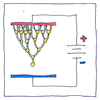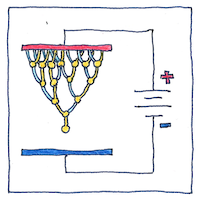John Sealy Townsend
physics

|
Townsend discharge
In Geissler and Crookes tubes, interactions between cathode rays and gas were more complex than at first appeared. In Geissler tubes, atoms of gas were not merely electrically excited to where they emited photons. In Crookes tubes not all electrons zooming toward the anode originated at the cathode. Townsend irradiated a cathode with X-rays and found the current decreased when the anode was closer and increased when the vacuum was lower. Turns out electrons freed by collisons were colliding with gas atoms and freeing more electrons. Turns out ions having lost electrons were zooming toward the cathode and colliding to free more electrons and create more ions.
Avalanche
For some conditions, the effect causes itself.
Magnification
Audion tubes magnify the radio signal. Geiger-Müller tubes magnify the ionizing particle. Television news magnifies the disaster. Attention narrows the focus and magnifies the view. A single clump of snow falls from a pine limb.



Townsend discharge, also known as Townsend avalanche and electron avalanche, is an application of Townsend’s collision theory of ionization, which describes how molecules or atoms of a gas can be ionized by colliding ions.
See also in The book of science:
Readings in wikipedia: